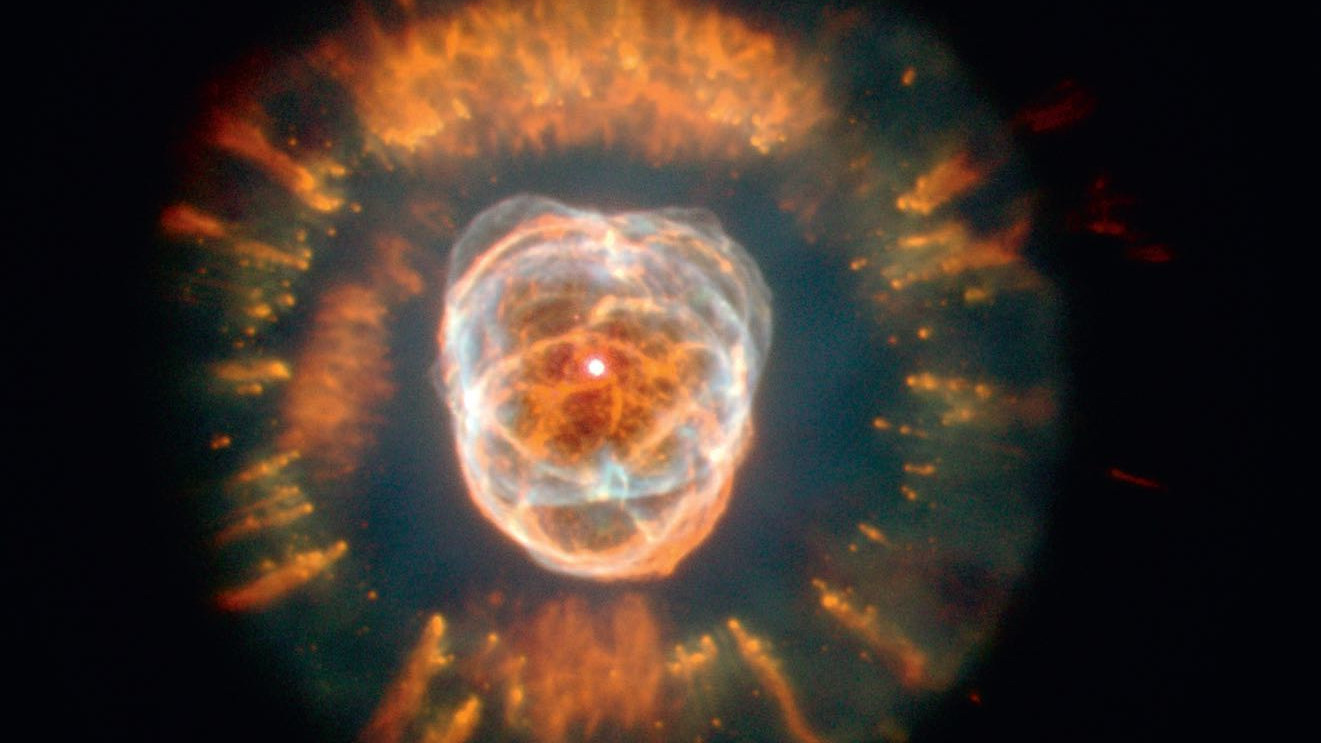A visit to the Eskimo
Many deep sky objects need a dark sky; but the Eskimo is an interesting target even for city astronomers.
 The Hubble Space Telescope shows the splendour of this planetary nebula.
The Hubble Space Telescope shows the splendour of this planetary nebula.Most of the clusters, nebulae and galaxies that are grouped together under the collective term “deep sky objects” are most visible from a dark countryside location. One of the exceptions is the planetary nebula NGC 2392, which bears the promising nickname the Eskimo Nebula. It can be found even with a smaller device, for example an 80-mm refractor.
The Eskimo Nebula: easy to find......
Anyone expecting to see something similar to the fascinating images produced by the Hubble Space Telescope (see below) will be disappointed, but NGC 2392 still has something surprising to offer the city astronomer. The first advantage is that the Eskimo Nebula is relatively easy to find. The best way is to start starhopping from Pollux in a south-westerly direction to δ Gem or Wasat, a prominent mag. 3 star. Just 2° east of here you will come across a striking, semicircular chain of five stars, 63 Gem being the brightest among them. From 63 Gem head around 1° south-east through an area with few stars, until you come to a Y-shaped star grouping. Now you should concentrate on the south-west region and focus on a faint mag. 9 point of light.
 The Eskimo Nebula NGC 2392 is located in the southern region of Gemini.
The Eskimo Nebula NGC 2392 is located in the southern region of Gemini.... and offers a surprising binary star effect
This light point is NGC 2392’s companion star, which makes the discovery of the nearby nebula particularly exciting. The greater the magnification, the more clearly the Eskimo Nebula emerges as this star’s partner. It is then very nice to see that the star retains its stellar character, i.e. remains point-shaped, while NGC 2392 increasingly transforms into a nebular speck and finally into a nebular disc. Suddenly it becomes clear why this is called a planetary nebula.
The interplay of these two objects that initially appear to be a binary star, makes the Eskimo Nebula particularly appealing - especially for city astronomers. A magnification of 110× has proven to be ideal. Can you use a small aperture telescope to make out structures within the nebula, which could perhaps even be interpreted as the face of an Eskimo? Unfortunately, this author was not successful in this respect, even with a great deal of imagination. To do this, you’ll need a much larger telescope - at least 300mm aperture is required. Nevertheless, NGC 2392 in the constellation of Gemini remains a worthwhile target due to it being relatively easy to find and this fascinating binary star effect.
Author: Karl-Peter Julius / Licence: Oculum-Verlag GmbH
